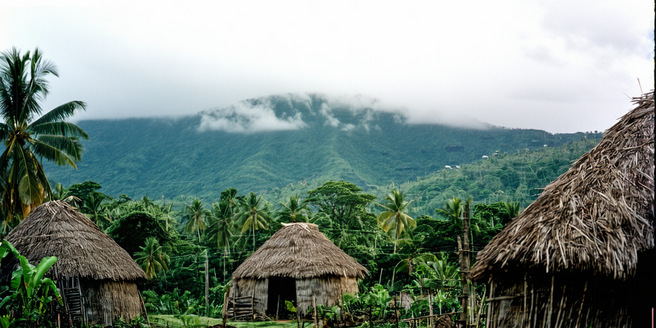
The Climate of the Caribbean in the 16th Century
The Caribbean in the 16th century was characterized by a tropical climate, marked by high humidity and regular rainfall. This environment was both a boon and a challenge for the Spanish explorers, as the lush landscapes promised fertile lands for agriculture, but the unpredictable weather patterns posed threats to their endeavors. Hurricanes, then known as tempestades, were particularly fearsome, often developing between June and November. Spanish settlers had to adapt quickly to the stark climate differences from Europe, relying heavily on indigenous knowledge of weather patterns and natural indicators to navigate these lands successfully. The intense heat and fluctuating weather often led to health issues among the settlers, affecting their ability to maintain stable communities and push further into the interior as they prioritized coastal settlements for safety and trade.
The Role of Tropical Storms in Naval Expeditions
Tropical storms played a critical role in shaping naval expeditions during the Spanish conquest of the Americas. Navigators had to develop a keen understanding of weather patterns to ensure safe passages across the Atlantic and through the Caribbean. These storms, with their powerful winds and treacherous seas, often dictated the timing and success of naval operations. A well-timed hurricane season could delay or completely thwart efforts to reinforce or resupply distant colonies. Ships were often lost, along with their precious cargoes, forcing the Spanish crown to rethink logistics and maritime strategies continually. This unpredictability demanded highly adaptable plans and resilient ships, ultimately influencing the design and construction of the Spanish galleons tasked with enduring such perils on the high seas while maintaining communication lines open with the motherland.
Survival Strategies and Indigenous Knowledge
Indigenous peoples of the Caribbean had lived through countless storm seasons and developed sophisticated strategies for survival long before the arrival of the Spanish. They constructed their homes in areas less prone to flooding and used materials that could withstand high winds. Understanding the signs of approaching storms, like changes in animal behavior or wind patterns, they would prepare accordingly, storing food and securing shelter. This knowledge was invaluable to the Spanish, who initially struggled with the unfamiliar climate. The exchange of this expertise facilitated a temporary partnership where survival often took precedence over conflict. Indigenous guides became essential to the Spanish, helping them navigate treacherous waters and advising on the best places to establish settlements that minimized exposure to the worst impacts of the volatile Caribbean weather.
Impact on Spanish Colonial Settlements
The frequent and severe tropical storms significantly impacted Spanish colonial settlements in the Caribbean. Many of the early settlements were precariously located on low-lying islands or coasts vulnerable to storm surges and flooding. These conditions necessitated constant rebuilding and adaptation. Colonial structures had to be engineered to withstand intense weather; however, the resources and technology available were often insufficient, leading to repeated devastation. The economic impact was substantial, as crops were frequently destroyed, and supply lines disrupted, causing food shortages and economic instability. Colonists had to develop better communication systems to anticipate storms and mitigate their impact. These challenges shaped the colonial administrative practices and necessitated a more robust and resilient settlement strategy to ensure the Spanish could maintain their dominance in the region.
Historical Accounts of Storms During the Conquest
Historical accounts from the period of the Spanish conquest vividly illustrate the terrifying power of tropical storms. Chroniclers like Bartolomé de las Casas recorded numerous instances where entire fleets were decimated, and nascent colonies were obliterated. These records serve as crucial primary sources, providing insight into the magnitude of these natural disasters and their consequences on Spanish endeavors. One notable account describes the complete destruction of a fleet bound for Hispaniola, underscoring the perilous nature of maritime ventures in these waters. Such narrations underscored the dire need for developing better storm prediction and survival strategies, ultimately influencing Spanish policies on navigation and settlement planning in the New World. The chroniclers’ descriptions often highlight the awe and fear these storms inspired in both Europeans and indigenous peoples alike.
Long-term Effects on Spanish and Indigenous Societies
The long-term effects of tropical storms during the Spanish conquest were profound, shaping both Spanish and indigenous societies. For the Spanish, frequent hurricanes necessitated the development of more durable infrastructure and robust supply chains. These challenges also prompted technological innovations in shipbuilding and navigation. For indigenous societies, the influx of European settlers and their different approaches to agriculture and construction exacerbated the impacts of these storms on their traditional lands. While the Spanish sought to exploit resources and exert control, many indigenous communities adapted by blending their knowledge systems with new technologies, despite the overarching disruptions. The cultural exchanges that occurred because of these climatic challenges ultimately led to the evolution of a unique Caribbean identity, deeply connected to the environment and reflective of a shared history of resilience in the face of natural adversities.
